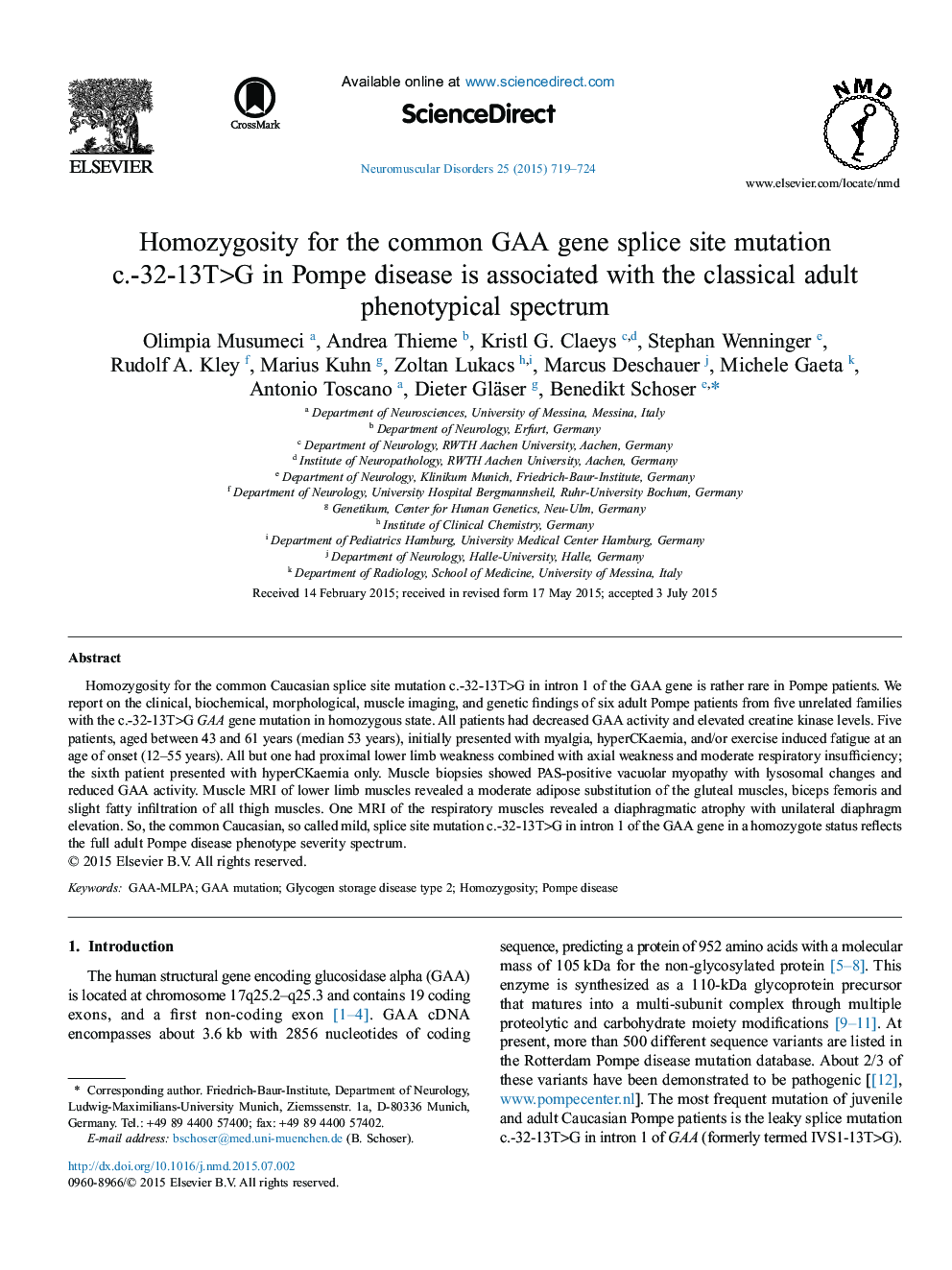| Article ID | Journal | Published Year | Pages | File Type |
|---|---|---|---|---|
| 3079219 | Neuromuscular Disorders | 2015 | 6 Pages |
•We report the clinical manifestations of homozygosity for the common GAA splice site mutation in 6 Caucasian patients.•Initial presentations are myalgia, hyperCKaemia, and exercise induced fatigue.•Adult patients show the classic progressive axial and proximal myopathy phenotype.•Homozygote c.-32-13T>G GAA mutation reflects the complete adult Pompe disease severity spectrum.
Homozygosity for the common Caucasian splice site mutation c.-32-13T>G in intron 1 of the GAA gene is rather rare in Pompe patients. We report on the clinical, biochemical, morphological, muscle imaging, and genetic findings of six adult Pompe patients from five unrelated families with the c.-32-13T>G GAA gene mutation in homozygous state. All patients had decreased GAA activity and elevated creatine kinase levels. Five patients, aged between 43 and 61 years (median 53 years), initially presented with myalgia, hyperCKaemia, and/or exercise induced fatigue at an age of onset (12–55 years). All but one had proximal lower limb weakness combined with axial weakness and moderate respiratory insufficiency; the sixth patient presented with hyperCKaemia only. Muscle biopsies showed PAS-positive vacuolar myopathy with lysosomal changes and reduced GAA activity. Muscle MRI of lower limb muscles revealed a moderate adipose substitution of the gluteal muscles, biceps femoris and slight fatty infiltration of all thigh muscles. One MRI of the respiratory muscles revealed a diaphragmatic atrophy with unilateral diaphragm elevation. So, the common Caucasian, so called mild, splice site mutation c.-32-13T>G in intron 1 of the GAA gene in a homozygote status reflects the full adult Pompe disease phenotype severity spectrum.
